In short, I love Palermo, and look forward another visit. It offers plenty of dazzling sights to wow any visitor. But it remains “unpolished” (to my eye). It is genuine and without pretense, as were the people I was fortunate to chat with.
I traveled in the south of Italy having heard many comments about the stark differences with the north. But I wanted to form my own impression, so I suspended judgement and simply walked, saw, talked and felt the nature of the place.
Palermo is, indeed, “gritty”, and not just because of station construction as I was told. It’s gritty in temperament and surroundings. There are far more half-tumbled-down buildings. Far more disrepair. Is it from a generally lower income? Perhaps. That’s what I’ve heard, but not knowing the stats, I can only guess at that conclusion. Is it from a lack of pride in the Palermitani surroundings? I really doubt that! (And who would I be to come in for a few days and judge that they are lacking in pride?! Ha!)
I really covered territory, on foot, around Palermo! Sure, I followed the main avenues, but I especially walked into small, very local neighborhoods where people were simply going about their days. Tourism was not their efforts’ focus, and therefore, I wasn’t met with the look of boredom or disdain that I found in other cities focused on gleaning travelers’ funds.
And perhaps it’s naiveté, but at no time did I feel my personal safety was in question as a single woman traveling alone. By glancing at some of the areas I entered, one might think they were unsafe places to be. But my radar never sent me any alerts.
Palermo gave me visions that stunned me with history and beauty. It also gave me contrasts, which tell the non-fairy-tale story of the place. Palermo is unscripted and organic and I like the truth of it.
– – –
I had booked the B&B Kemonia for two nights, but within an hour after arriving, I changed it to 4 nights. It was an ideally-situated, very cozy home base, and Riccardo, the owner, was a dear and very helpful with his recommendations. My room, 5 floors up, had a lovely balcony looking out over the city street and the hill beyond.
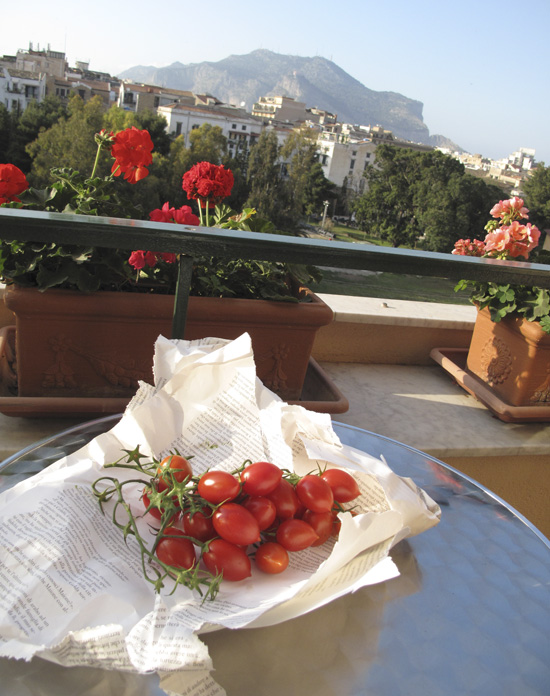
From my balcony, I looked down to the long string of scooters parked in their designated area.
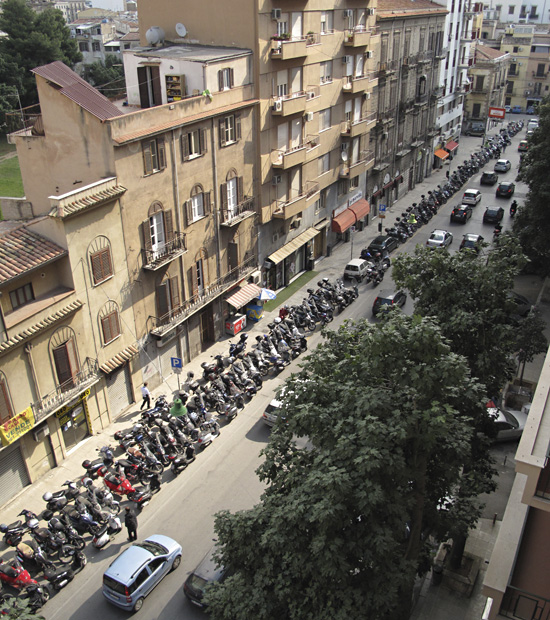
Just down the street from the B&B, close to the large, Capo market, is “The Chicken Boutique. Healthy like a Fish. Beautiful like the sun. Good like bread.”
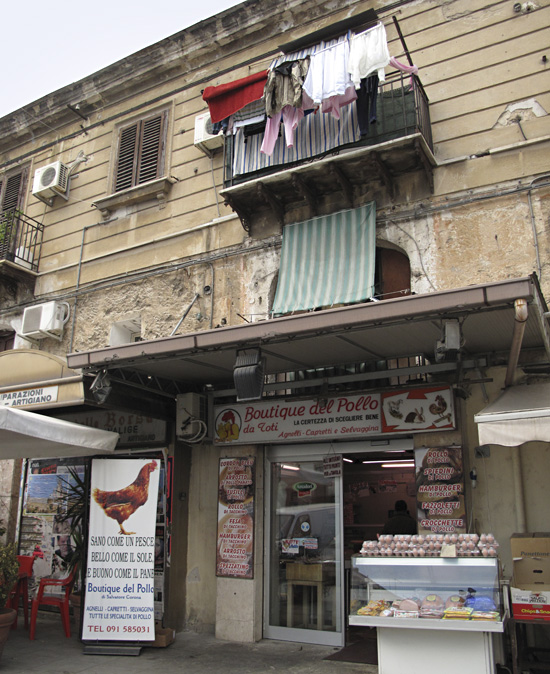
Some travelers have said they get tired of seeing “yet another church!” Right or wrong, the churches became the focus of creative and financial efforts, often over centuries of construction. These efforts yielded grand, physical monuments to artistic and architectural expression, engineering prowess, religious fervor, political power and regional positioning. Not “just another photo op”. And to this day, in the lives of a religious people, the central cathedral or duomo is the heart of the town, and the main piazza out in front is the “living room” and central gathering point. It is with this understanding that one should marvel at Italy’s remarkable cathedrals.
Palermo’s Cathedral is not far from the Palazzo Reale, the Royal Palace.
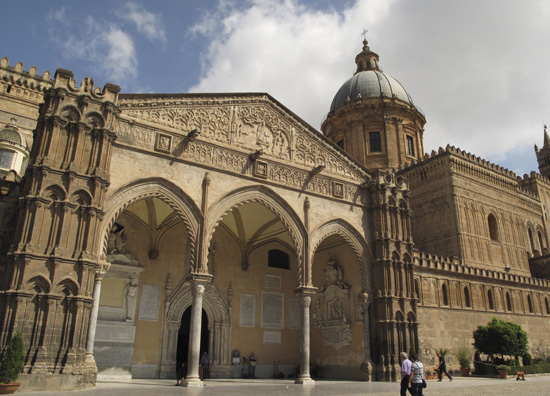
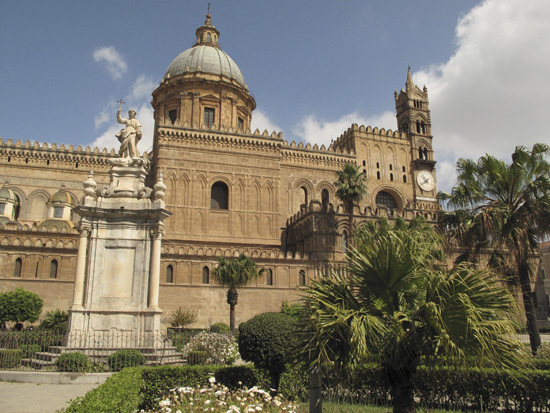
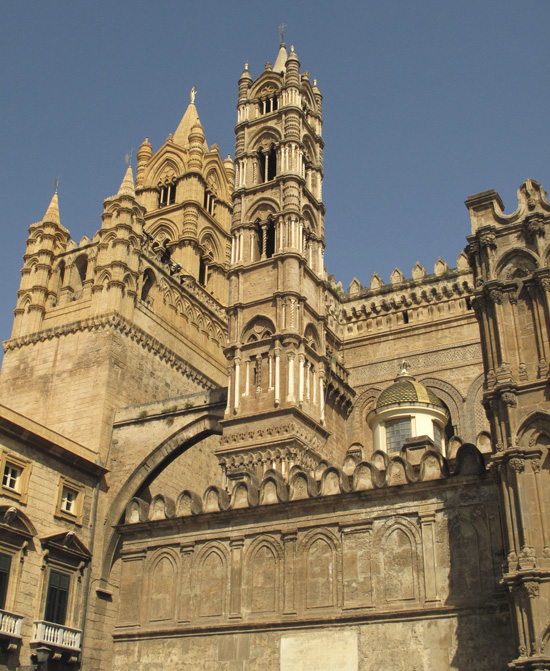
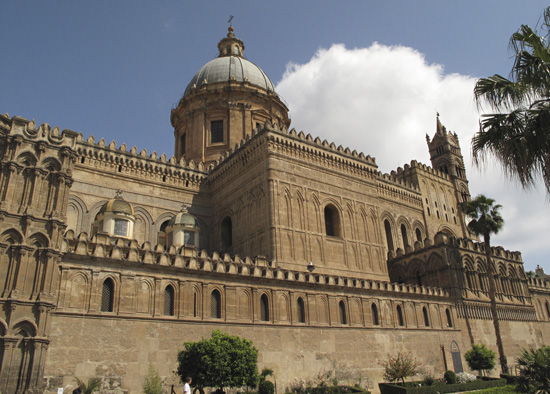
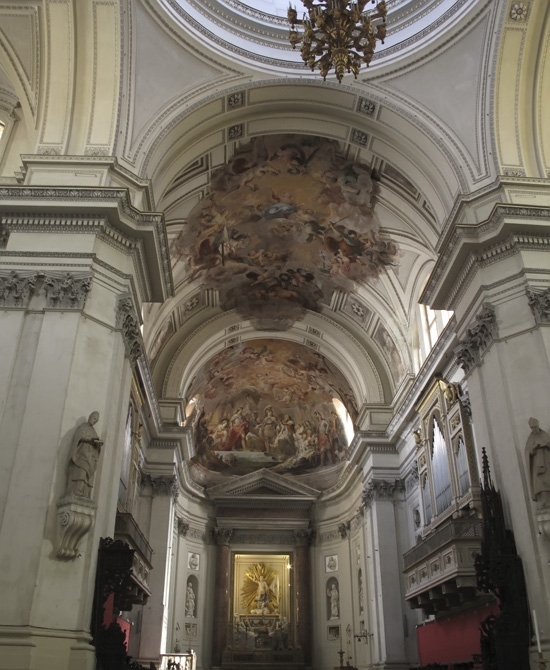
All over town there are visual details that caught my eye and stopped me. “Albergo” means “hotel”.
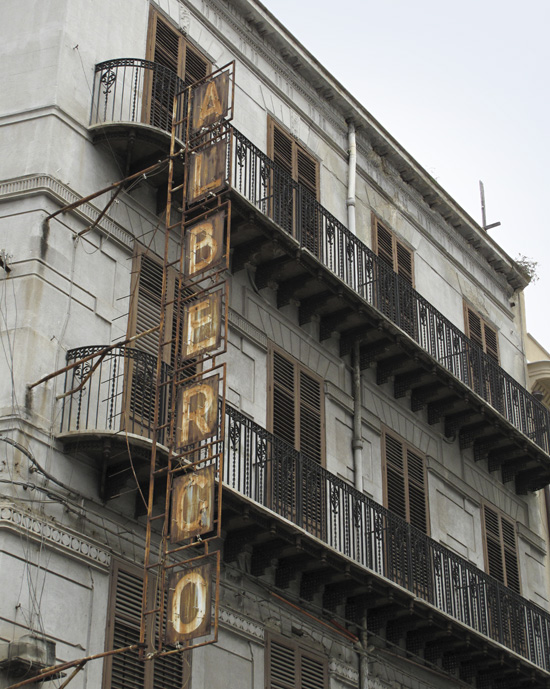
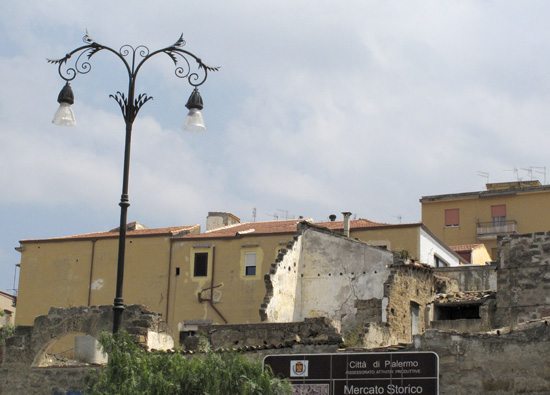
Out in front and along the wall of the Palazzo Reale, there were several groups of men intensely playing cards.
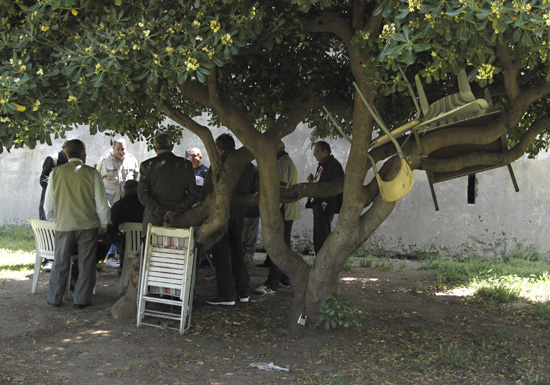
As Americans, we think that the hanging laundry is picturesque and quaint. (Granted, from a visual standpoint, I enjoy it, too.) But it’s simply functional. There are no clothes dryers here.
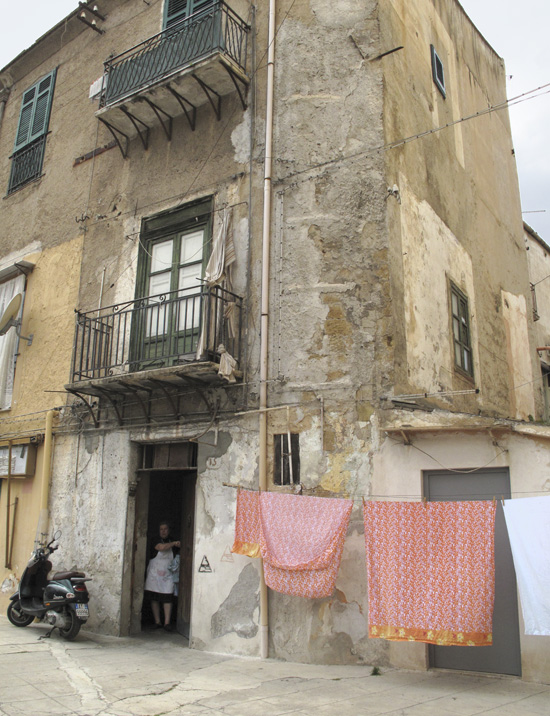
How clean will that laundry remain when hung to dry next to a construction site? But what other options are there?
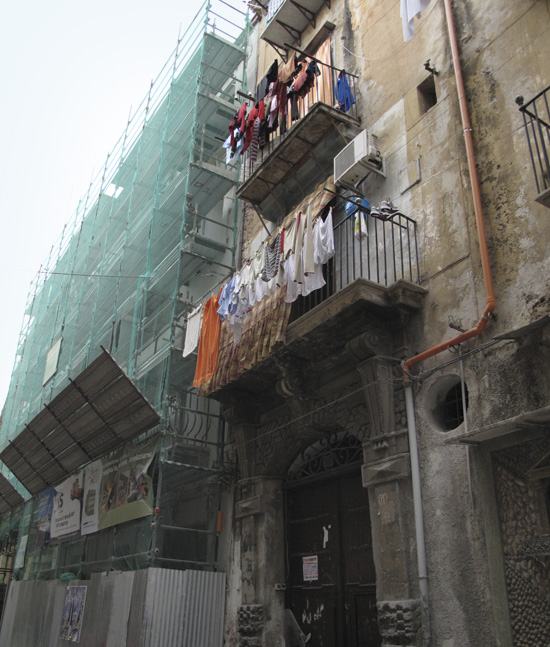
Decorated carts, Carretti de Gara, were used for weddings and parades, a variation of the simpler, traditional work carts. Tucked into a narrow alley way, I found the repository of carts-in-waiting.
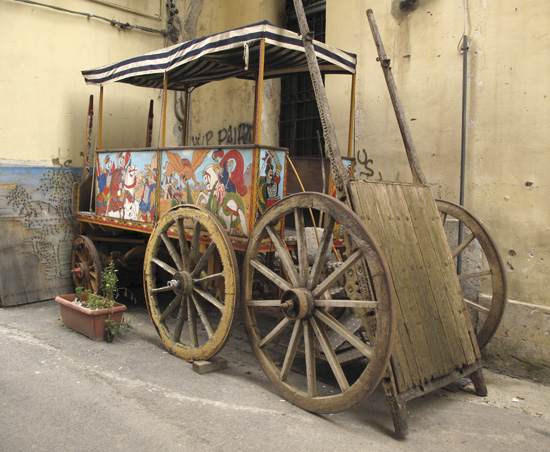
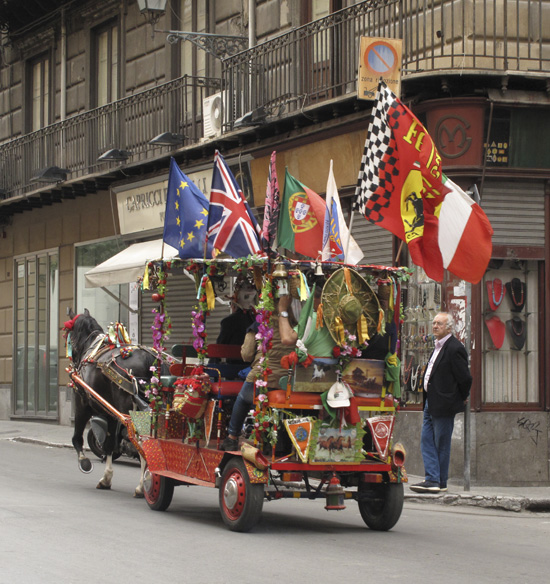
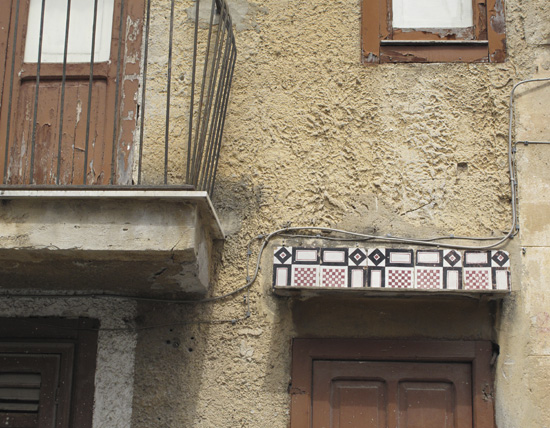
Surf the net, send a fax, buy a rooster.
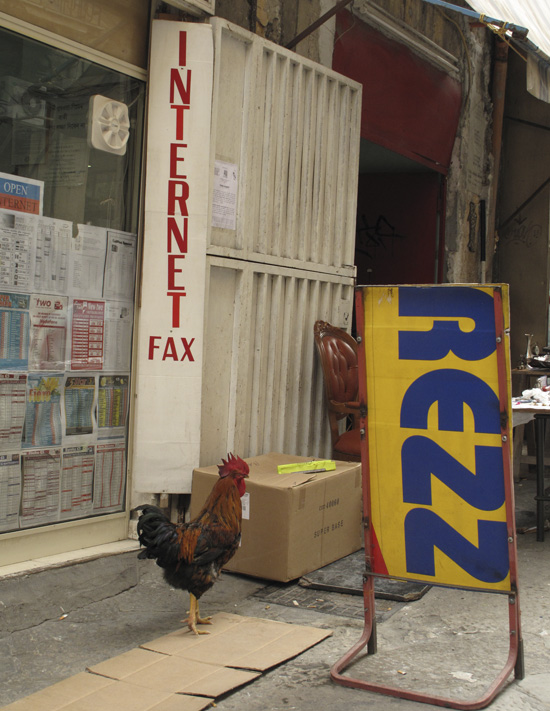
St. John of the Hermits. The red domes show up in several places around town.
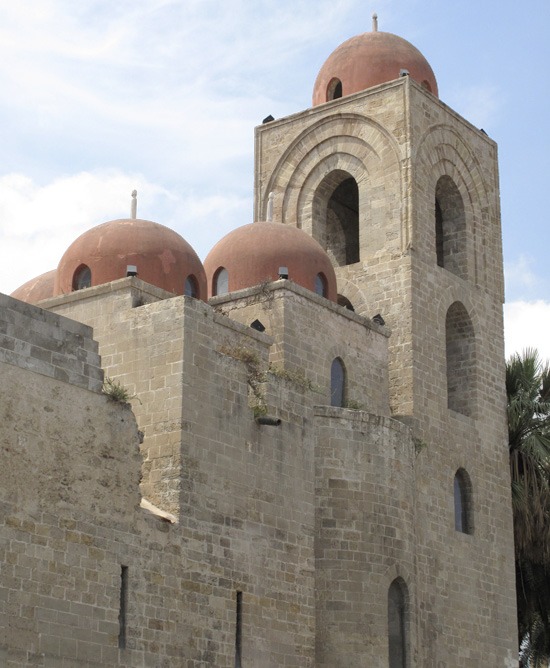
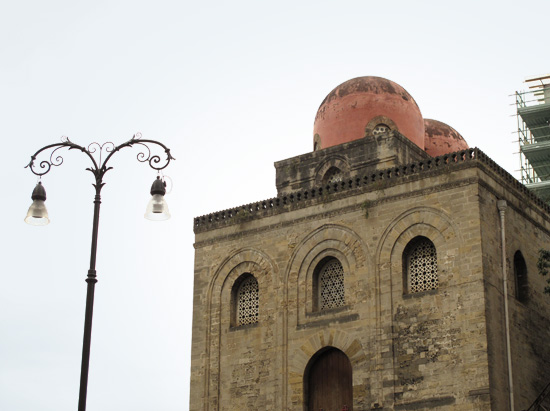
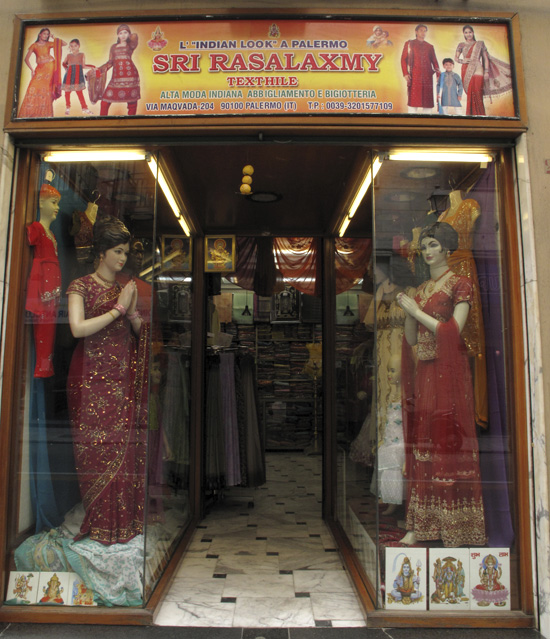
Considering most “lifts”, when present, are only big enough to carry 3 people and a vertical stack of suitcases, HOW does one move into an upper floor apartment? Moving services elevate all the household belongings on an exterior platform and go in through the balcony door.
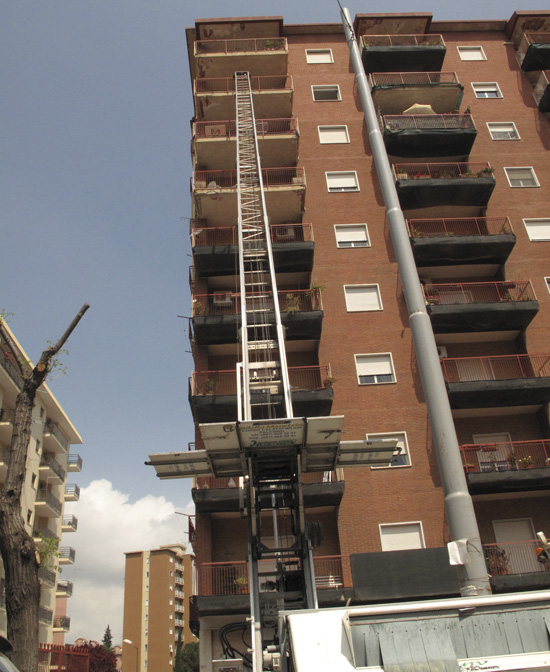
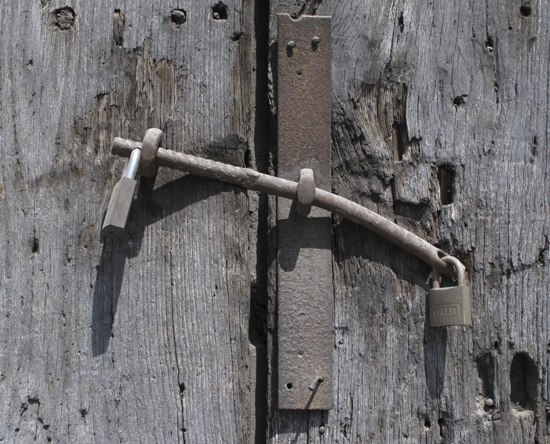
Drinks and gelato near the cathedral.
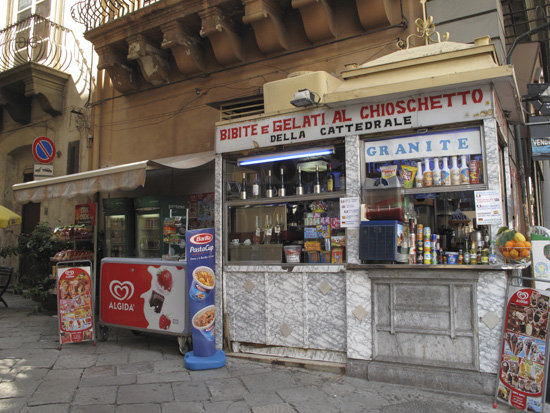
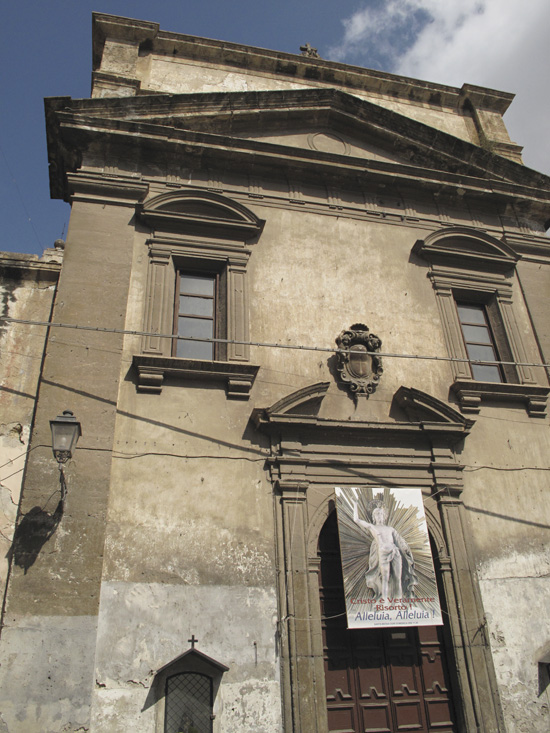
Just down the narrow road from the Capo market, I saw this grim figure in a window and was stunned. It wasn’t until I looked it up later that I learned more about the history/legend of the Beati Paoli.
From Wikipedia:
Beati Paoli is the name of a secretive sect thought to have existed in medieval Sicily. The sect resembles an order of knights fighting for the poor and the commoners. The Beati Paoli have the same connotation to many Sicilians as Robin Hood has to Northern Europeans. Today you will find traces of the Beati Paoli in the Capo district of Palermo, where a square, a street and even a restaurant bear their name. In Sicily the Beati Paoli came to be seen – both in the popular imagination and in the ideology of mafia groups – as a proto-manifestation of the Mafia.
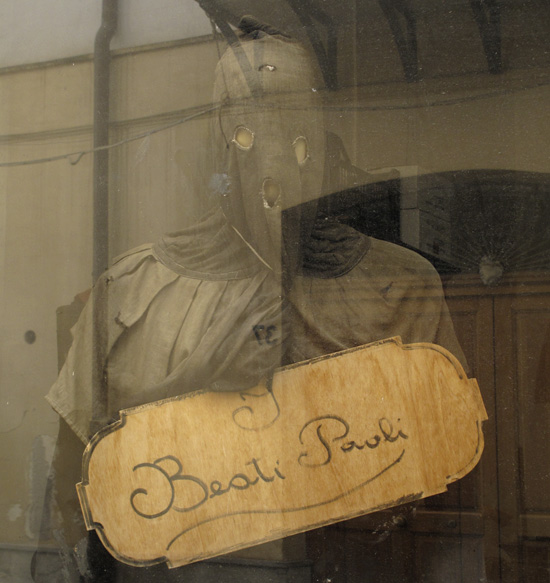
Note that this snack kiosk is named after the Beati Paoli.
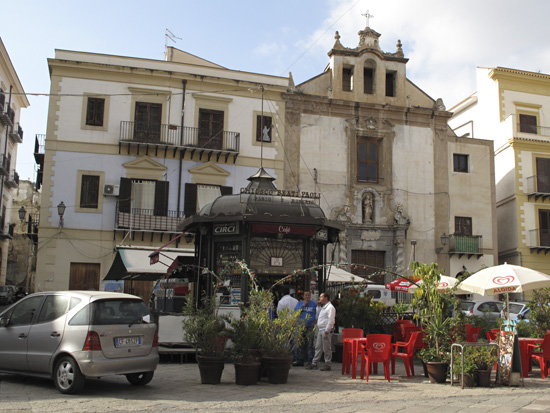
Antiques for sale near the Mercato delle Pulci, in the “restoration district”.
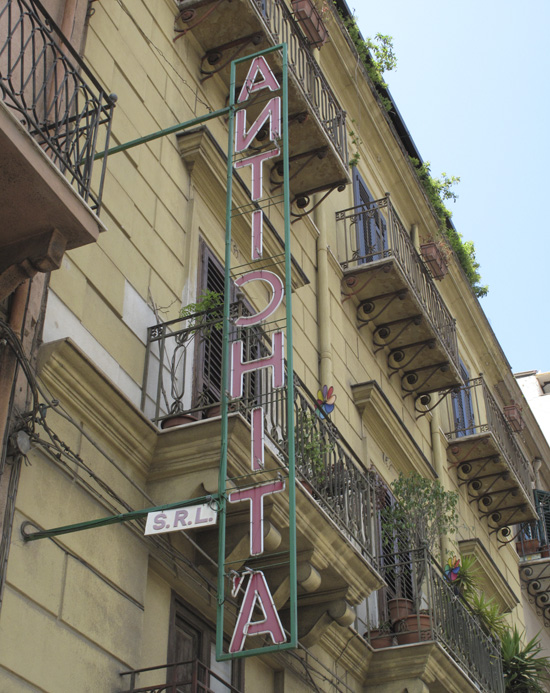
Don’t artists everywhere personalize their homes and spaces?!
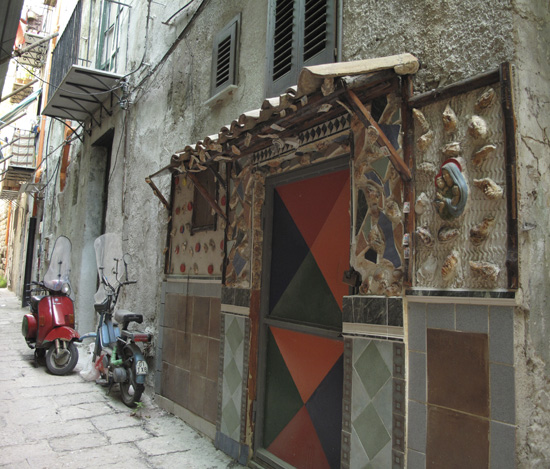
I walked up, up, up the road to the Catacombs of the Capuchin Monks, begun in the 16th century. Sections were later created for priests, lay men, women, professionals, artists and children. Photos are not allowed.
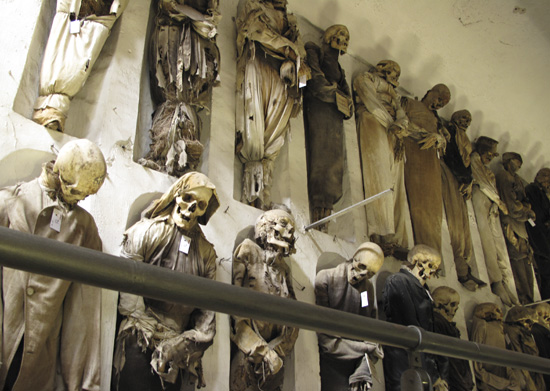
I’ve traveled in much of Italy and something I’ve seen in every region and admire greatly is the evidence of “mend and reuse”. Rather than tearing down a building and starting over, I see patches and revisions, layering up the centuries of history in a structure. Closed-up doorways and windows leave traces, and their styles tell us when it was that they were open.
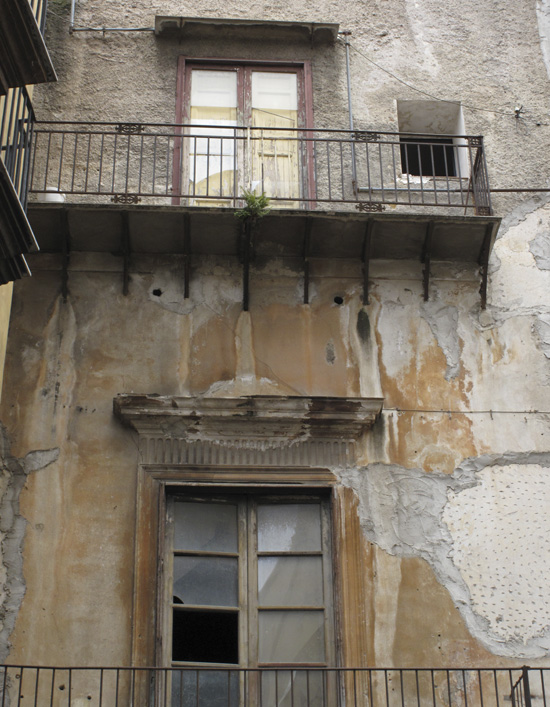
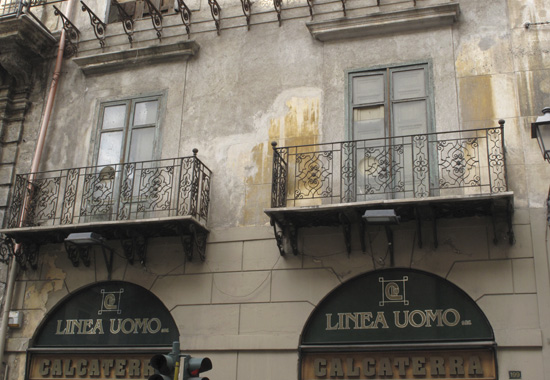
This old mattress frame is an innovative gate and doorway.
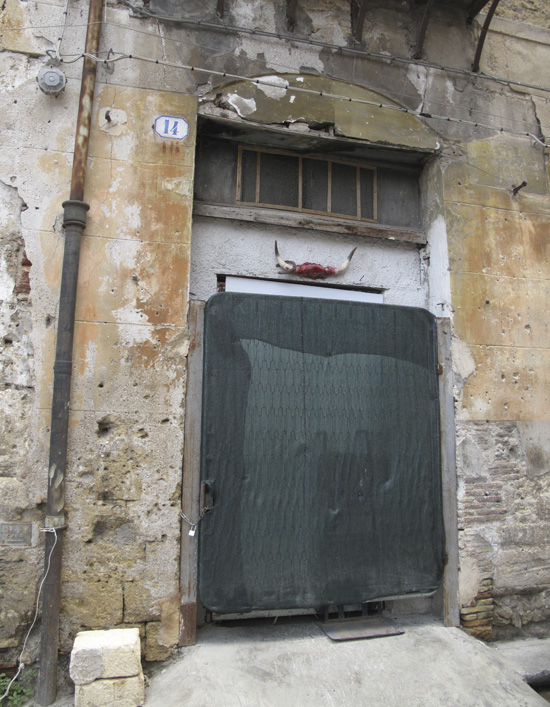
Bold, modern wayfinding signage. (Looks like the “Zapf Dingbats” font to me, but I like it.)
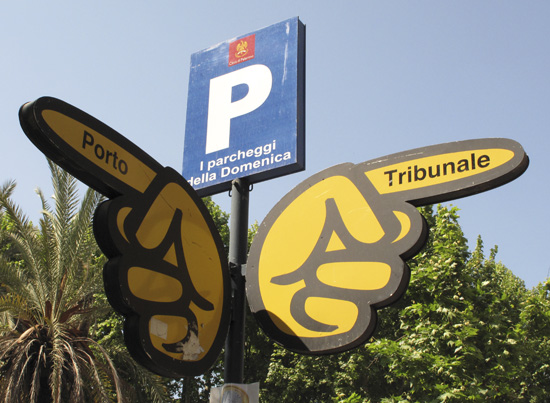
La Capella Palatina, the Palatine Chapel, quite simply, is stunning. The fineness, the modeling, the extensiveness of the mosaic-work that covers the interior astounds. (Much like the duomo of Monreale.)
From Wikipedia:
The Palatine Chapel is the royal chapel of the Norman kings of Sicily situated on the ground floor at the center of the Palazzo Reale in Palermo, southern Italy.
The chapel was commissioned by Roger II of Sicily in 1132 to be built upon an older chapel (now the crypt) constructed around 1080. It took eight years to build and many more to decorate with mosaics and fine art. The sanctuary, dedicated to Saint Peter, is reminiscent of a domed basilica. It has three apses, as is usual in Byzantine architecture, with six pointed arches (three on each side of the central nave) resting on recycled classical columns.
The mosaics of the Palatine Chapel are of unparalleled elegance… The oldest are probably those covering the ceiling, the drum, and the dome. The shimmering mosaics of the transept, presumably dating from the 1140s and attributed to Byzantine artists… The rest of the mosaics, dated to the 1160s or the 1170s, is executed in a cruder manner and feature Latin (rather than Greek) inscriptions. Probably a work of local craftsmen… This may be the only substantial passage of secular Byzantine mosaic extant today.
The chapel combines harmoniously a variety of styles: the Norman architecture and door decor, the Arabic arches and scripts adorning the roof, the Byzantine dome and mosaics. For instance, clusters of four eight-pointed stars, typical for Muslim design, are arranged on the ceiling so as to form a Christian cross.
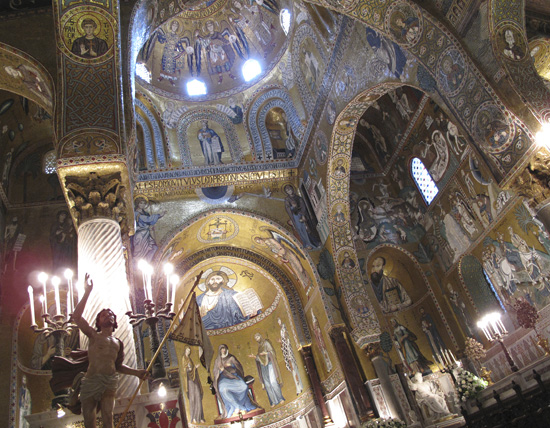
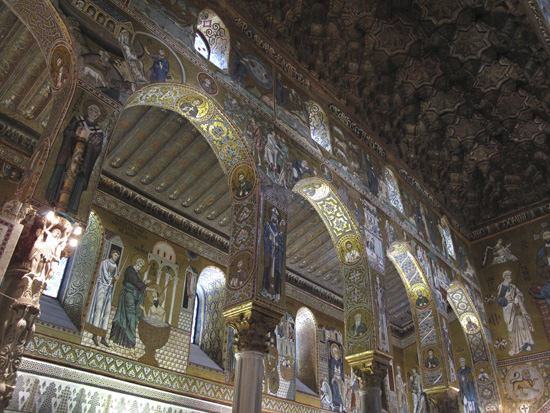
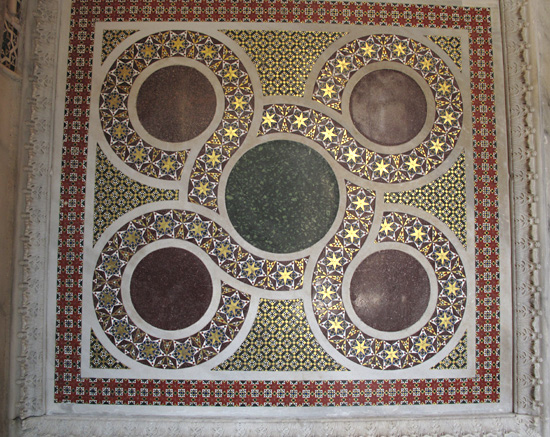
Immediately at the entrance to the Capella Palatina, with groups of foreign tourists and school kids streaming by, is a tough tom cat, sleeping wrapped around the trunk of a potted tree. He is imperturbable. Everyone watched to see that he was, indeed, still breathing. The kids were more enrapt with “Tom” than with the mosaics.
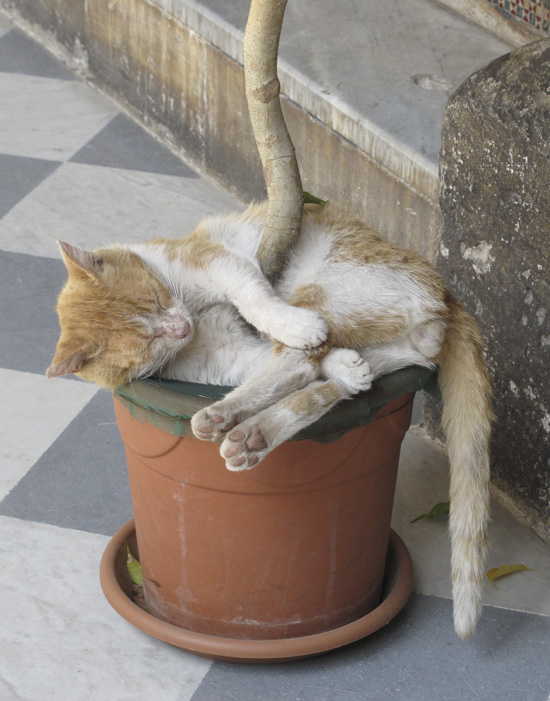
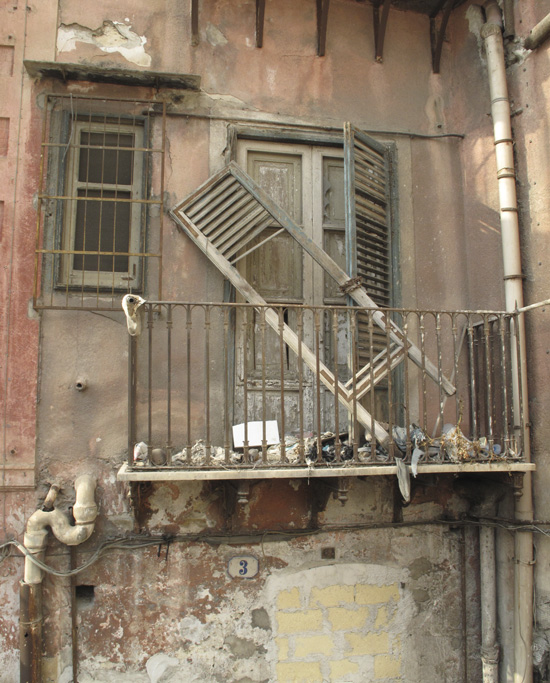
Wikipedia has a descriptive, broad overview of Palermo and its history.
